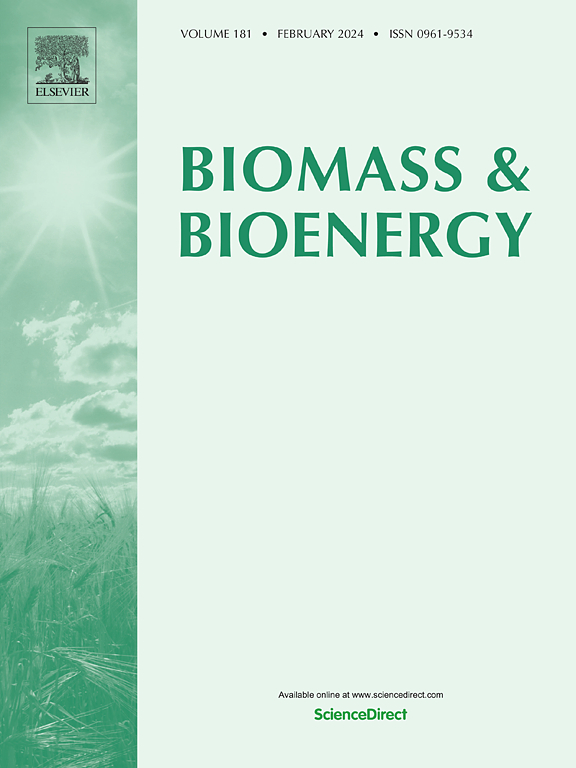Efficient in-situ catalytic upgrading of tobacco biomass pyrolysis to produce burnt sweet fragrance substances over reduced graphene oxide supported ceria-based metal oxides
IF 5.8
2区 生物学
Q1 AGRICULTURAL ENGINEERING
引用次数: 0
Abstract
China is the world's largest producer and consumer of tobacco and the comprehensive utilization of tobacco biomass (TB) has become an urgent problem. The purpose of this work was to upgrade the burnt sweet fragrance substances (BSFSs) from fast pyrolysis of TB with three cerium-based metal oxide adopted as catalysts for in situ catalytic fast pyrolysis (CFP). Online single photon ionization time-of-flight mass spectrometry (SPI-TOF-MS) was employed to detect the volatile products. The results showed that there were 12 BSFSs in 38 detected volatile products from TB pyrolysis and cerium-based metal oxide supported on reduced graphene oxide (Ce/RGO) presented the highest catalytic activity and selectivity. The intensity was increased by 41 % compared to pure TB under the catalytic conditions optimized by response surface methodology (RSM) design. Ce/RGO can accelerate the process of cellulose and hemicellulose pyrolysis due to its excellent dehydration and decarbonylation performance. This work offers valuable insights for guiding the directed conversion of biomass into value-added chemicals, paving the way for a more sustainable future.求助全文
约1分钟内获得全文
求助全文
来源期刊

Biomass & Bioenergy
工程技术-能源与燃料
CiteScore
11.50
自引率
3.30%
发文量
258
审稿时长
60 days
期刊介绍:
Biomass & Bioenergy is an international journal publishing original research papers and short communications, review articles and case studies on biological resources, chemical and biological processes, and biomass products for new renewable sources of energy and materials.
The scope of the journal extends to the environmental, management and economic aspects of biomass and bioenergy.
Key areas covered by the journal:
• Biomass: sources, energy crop production processes, genetic improvements, composition. Please note that research on these biomass subjects must be linked directly to bioenergy generation.
• Biological Residues: residues/rests from agricultural production, forestry and plantations (palm, sugar etc), processing industries, and municipal sources (MSW). Papers on the use of biomass residues through innovative processes/technological novelty and/or consideration of feedstock/system sustainability (or unsustainability) are welcomed. However waste treatment processes and pollution control or mitigation which are only tangentially related to bioenergy are not in the scope of the journal, as they are more suited to publications in the environmental arena. Papers that describe conventional waste streams (ie well described in existing literature) that do not empirically address ''new'' added value from the process are not suitable for submission to the journal.
• Bioenergy Processes: fermentations, thermochemical conversions, liquid and gaseous fuels, and petrochemical substitutes
• Bioenergy Utilization: direct combustion, gasification, electricity production, chemical processes, and by-product remediation
• Biomass and the Environment: carbon cycle, the net energy efficiency of bioenergy systems, assessment of sustainability, and biodiversity issues.
 求助内容:
求助内容: 应助结果提醒方式:
应助结果提醒方式:


